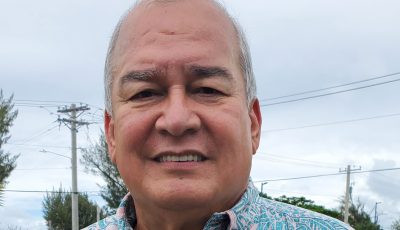McCaroll: Bacterial contamination in NMI drinking water has declined
Bacterial contamination in the CNMI’s drinking water has decreased over the course of 12 years, according to John McCaroll, U.S. Environmental Protection Agency Region 9 manager for Pacific Islands Office.
McCaroll, who visited the Rotary Club of Saipan’s weekly luncheon last Tuesday, said when he first came to Saipan about 13 years ago, people got water for just one to two hours a day. The water that was tested back then had bacterial contamination, McCaroll said.
Now, 90 percent of Saipan has water and bacterial contamination “went from common to almost rarity in drinking water,” he said.
McCaroll lauded the Commonwealth Utilities Corp. for improving its water infrastructure over the years.
In 2013, the water CUC served its consumers met all EPA primary standards, he said.
The primary source of water for the island of Saipan comes from 135 groundwater wells, one spring, and two Maui-type wells. One Maui-type well supplies all of the CUC Tinian water system.
On Rota, the water primarily comes from two surface water sources that are occasionally supplemented with groundwater from three deep groundwater wells. To control bacterial contamination in the water, CUC water operators add trace amounts of chlorine to the water before it is distributed into the pipelines to its customers.
“So things are better and yet it is still salty that you can’t drink it through the faucet. So it is a challenge, unlike other places where you turn on the faucet and you don’t think about and just drink it. There is still ways to go but there has been big improvements from the last 10 to 12 years,” McCaroll said.



























